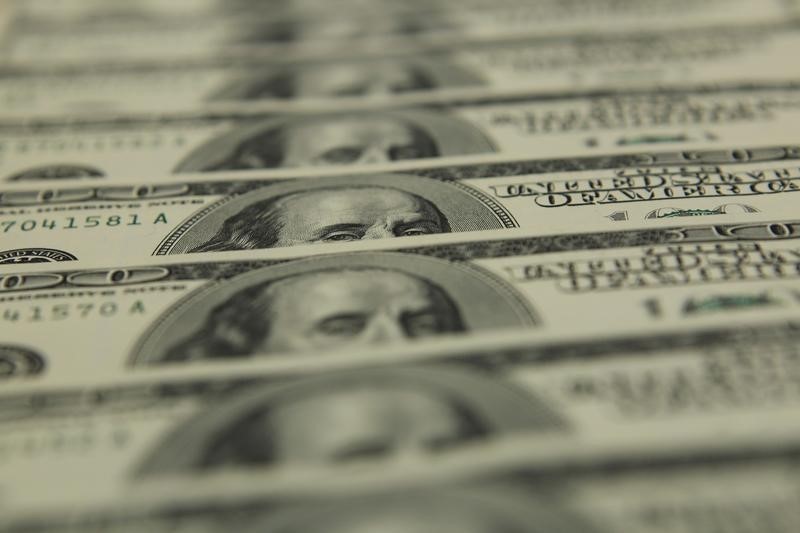Dollar retreats from highs; euro helped by German data
The U.S. dollar edged lower Tuesday, but remained near seven-week highs as traders mulled the outlook for Fed monetary policy in the wake of last week’s strong jobs report.
At 04:20 ET (08:20 GMT), the Dollar Index, which tracks the greenback against a basket of six other currencies, traded 0.2% lower to 102.139, after climbing to a near two-month high on Friday. Dollar takes a break from gains
Friday’s strong payrolls report has prompted traders to reassess the path of rate cutting by the Federal Reserve, with the chance of another 50 basis point cut in November largely priced out in favor of a more traditional 25 bps reduction.
The benchmark 10-year Treasury yield , reflecting the less aggressive expectations, stayed elevated above 4% on Tuesday, while the two-year yield hovered near its highest in more than a month.
This has helped to boost the dollar, as has the escalating tensions in the Middle East, which dented risk sentiment.
There are a number of addresses by Fed officials to digest this week, as well as the September inflation report and the minutes of the Fed’s meeting last month.
“We have observed some quite limited spillover into FX from US 10-year yields hitting the 4% mark, which appears as the tail of the payroll-induced move that has already triggered some sizeable positioning readjustments in dollar crosses,” said analysts at ING, in a note.
“There is a possibility that the FX market will take a break from being driven by rates now that the new, shallower 25bp per-meeting rate path by the Fed has become the market baseline. We suspect inflation data this week won’t prompt big directional changes in the dollar, which may instead respond more to the Middle East turmoil, and consequent moves in oil prices.” Euro helped by German industrial production
In Europe, EUR/USD rose 0.2% higher to 1.0995, with the euro helped by the release of stronger than expected German industrial production data, as the August release rose by a larger than expected 2.9% from the previous month.
Still, the less volatile three-month on three-month comparison showed that production was 1.3% lower in the period from June to August than in the previous three months.
The European Central Bank meets next week, and is expected to ease policy once more having already cut rates twice this year as inflationary pressures have eased.
GBP/USD rose 0.2% to 1.3104, moving away from Monday’s three-week low of 1.3059 it touched on Monday.
Data released earlier Tuesday showed that sales across Britain’s retail sector climbed at their fastest pace in six months throughout September.
Total sales increased by 2% year on year, according to the British Retail Consortium, aided by a 3.1% uptick at food retailers, while non-food transactions fell by 0.3%. Yuan retreats after holiday
USD/JPY fell 0.4% to 147.55, as it recouped some measure of steep gains logged over the past week.
Data showing steady wage growth and household spending also aided the Japanese currency.
USD/CNY rose 0.5% to 7.0506, as trade resumed after a week.
Sentiment towards China was boosted by a string of stimulus measures from Beijing, which include lower interest rates, but these place more pressure on the yuan, especially with U.S. interest rates now expected to remain higher.
Source: Investing.com
